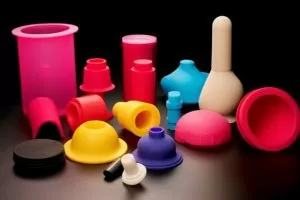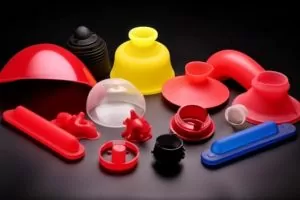Introduction
Silicone rubber is an indispensable material for compression molding, due to its heat resistance, electrical insulation, and flexibility properties. Thanks to this versatile material’s wide application across various industries and markets, compression molding has become one of the go-to techniques for shaping rubber materials into desired forms; typically by applying heat and pressure within a rubber compression molding cavity in order to achieve it.
Selecting the ideal silicone rubber grade for compression molding cannot be stressed enough. Manufacturers must carefully consider factors like temperature resistance, mechanical properties, material compatibility and specific application needs in making their decision; each factor can significantly impact product quality and performance in turn. By carefully choosing a silicone rubber grade to optimize compression molding processes and guarantee production of top quality parts.
In this article, we will delve into the details involved with selecting silicone rubber products for compression molding. This includes looking at the various types of silicone used for molding purposes and how well it melds with compression molding processes as well as how selecting suitable materials helps achieve optimal results. By the time this article concludes, you will have gained a clearer idea on how to select appropriate silicone rubber materials so as to produce superior molded products in your industry.

II. Types of Silicone Rubber for Molding
Room Temperature Vulcanizing (RTV) silicone rubber is often chosen for molding applications due to its many characteristics and benefits that make it suitable for molding processes. It offers several features and advantages which make this type of silicone rubber suitable for molding processes.
RTV silicone rubber, commonly referred to as “room temperature vulcanizing”, cures at room temperature without needing high heat or pressure for curing and solidification, making its processing both convenient and cost-effective. Moisture in the air initiates this curing process which leads to chemical reaction which turns liquid synthetic rubber into solid elastomers that cure more efficiently than high heat/pressure treatments alone.
RTV silicone rubber’s unique characteristics and benefits include:
RTV silicone rubber comes in liquid form, making it highly convenient to work with during the molding process. You can pour custom rubber out or inject it directly into mold cavities for precise replica of intricate details.
Excellent Reproduction:
RTV silicone rubber has superior reproduction capabilities, capturing even the smallest features and textures from original models for high-quality molds and parts production.
RTV silicone rubber exhibits excellent flexibility and elasticity, enabling easy removal of cured molds from their original model, as well as producing flexible yet durable molded parts.

RTV silicone rubber comes in various hardness levels, from soft and flexible to firm and rigid. This allows manufacturers to select the appropriate hardness based on what properties are desired in the final molded product.
Chemical Resistance:
RTV silicone rubber offers excellent chemical resistance, including oils, solvents and some acids. This ensures that molded parts can withstand exposure to harsh environments or substances without experiencing significant degradation.
Temperature Resistance:
RTV silicone rubber displays superior temperature resistance, maintaining its physical properties across a broad temperature spectrum. This property makes RTV silicone rubber suitable for applications which expose it to extreme temperatures such as extreme heat or cold.
RTV silicone rubber has an exceptionally long shelf life, enabling manufacturers to store it for extended periods without experiencing significant degradation or performance loss.
RTV silicone rubber offers manufacturers many characteristics and benefits that help create precision molds and parts with high quality finishes. The ease of use, flexibility, chemical resistance and versatility make RTV silicone rubber an excellent choice for applications across industries such as automotive, electronics and consumer goods manufacturing.
III. Can Silicone be Compression Molded?
Silicone rubber is indeed a material that can be effectively shaped through the process of compression molding. Compression molding is a widely used technique for transforming raw silicone rubber materials into desired forms, such as for rubber gaskets, seals, and custom parts.
The compression molding process involves the following steps:
1.Preparation:
First, the silicone rubber material is prepared by mixing it with additives, fillers, and curing agents to achieve the desired properties and consistency. The mixture is typically in the form of a compound or a pre-formed sheet.
2.Mold Preparation:
A mold, typically made of metal, is prepared according to the desired shape and size of the final product. The mold consists of two halves, known as the cavity and core, which create the desired shape when brought together. The mold may also include additional features like vents and ejector pins.

3.Loading the Material:
The prepared silicone rubber compound or sheet is placed into the mold cavity. The amount of material is carefully measured to ensure proper filling of the mold and the desired thickness of the final part.
4.Closing the Mold:
The transfer molding halves are closed and securely clamped together, ensuring a tight seal. This step is crucial as it will determine the shape and precision of the final product.
5.Applying Heat and Pressure:
Heat and pressure are applied to the closed mold. The heat promotes the curing process of the silicone rubber, causing it to flow and take the shape of the rubber molding cavity. The pressure aids in the distribution of the material and ensures complete filling of the mold.
6.Curing:
The silicone rubber undergoes curing, where it transforms from a liquid or solid compound into a crosslinked, solid elastomer. The curing process typically takes place at elevated temperatures for a specific period, allowing the material to solidify and acquire its desired properties.
7.Cooling and Demolding:
After the curing process, the mold is cooled to solidify the silicone rubber further. Once cooled, the mold is opened, and the cured part is carefully removed. The part may undergo additional post-curing processes or finishing operations, such as trimming or surface treatment, to achieve the desired specifications.
Compression molding offers several advantages for shaping silicone rubber. It allows for the production of complex geometries and precise dimensions. The process ensures excellent part-to-part consistency and reproducibility. It also enables the incorporation of inserts or metal components within the molded part, if necessary. Additionally, compression molding silicone also allows for efficient mass production, making it a preferred method in industries such as automotive, medical, and electronics.
By utilizing the compression molding process, manufacturers can effectively shape silicone rubber into a wide range of products, providing excellent performance, durability, and versatility across various applications.
IV. Suitable Materials for Compression Molding
Compression molding is a versatile technique that can be applied to various materials, including silicone rubber, thermosetting plastics, thermoplastics, and elastomers. Each material type has its unique characteristics, and the selection depends on the specific requirements of the application. Let’s explore these materials and the factors that influence their suitability for compression molding.
1.Silicone Rubber: Silicone rubber is widely used in compression molding due to its excellent heat resistance, flexibility, and chemical resistance. It offers a broad temperature range, maintaining its properties in extreme conditions. Silicone rubber is commonly employed in industries such as automotive, electronics, and medical, where durability, sealing, and insulation are crucial.
2.Thermosetting Plastics: Thermosetting plastics, such as epoxy and phenolic resins, are well-suited for compression molding. These materials undergo a chemical crosslinking reaction during the curing process, resulting in a rigid, durable structure. Thermosetting plastics offer high dimensional stability, excellent electrical properties, and resistance to heat and chemicals. They find applications in electrical components, aerospace parts, and consumer goods.
3.Thermoplastics: Certain thermoplastics, like polypropylene (PP) and polyethylene (PE), can be compression molded. Thermoplastics soften when heated and solidify upon cooling without undergoing chemical changes. They offer a wide range of properties, including strength, impact resistance, and chemical resistance. Thermoplastics are commonly used in industries such as automotive, packaging, and appliances.
4.Elastomers: Elastomers, including natural rubber and synthetic rubbers like styrene-butadiene rubber (SBR), are suitable for compression molding. Elastomers exhibit high elasticity, excellent resilience, and good sealing properties. They find applications in automotive components, seals, gaskets, and O-rings.
The selection of suitable materials for compression molding depends on several factors, including:

a. Application Requirements:
Consider the specific requirements of the intended application, such as temperature resistance, chemical compatibility, electrical insulation, or mechanical properties. Different materials excel in different areas, and matching the material properties with the application needs is essential.
b. Material Properties:
Evaluate the physical and mechanical properties of the materials, including hardness, flexibility, tensile strength, and elongation. These properties determine the material’s ability to withstand environmental conditions and perform its intended function.
c. Manufacturing Process:
Analyze the feasibility of the compression molding process for the chosen material. Consider factors such as material flow characteristics, cure time, and compatibility with the mold design. Some materials may require specific mold features or additional processing steps, such as preheating or post-curing.
d. Cost Considerations:
Assess the cost-effectiveness of the chosen material, including material availability, production efficiency, and waste management. Balancing the desired material properties with cost considerations is essential for successful compression molding.
e. Industry Standards and Regulations:
Consider any industry-specific standards or regulations that govern the material selection. Certain applications, particularly in industries like medical or aerospace, may have specific material requirements to meet safety, performance, or regulatory compliance.

By carefully evaluating these factors, manufacturers can select the most suitable material for compression molding, ensuring the production of high-quality, functional, and cost-effective compression molded rubber products.
V. Understanding HCR and LSR Silicone
High consistency rubber (HCR) and liquid silicone rubber (LSR) are two distinct forms of silicone used in molding processes. Understanding their differences and applications is crucial in choosing the appropriate silicone for compression molding.
1.High Consistency Rubber (HCR):
HCR silicone refers to a solid, high-viscosity silicone compound that requires heat and pressure to shape. It is typically supplied in the form of pellets or sheets. HCR silicone offers several advantages in compression molding, including:
Versatility: HCR silicone can be used to produce a wide range of compression molded parts such as gaskets, seals, and O-rings.

Good Mechanical Properties: HCR silicone exhibits excellent tensile strength, tear resistance, and compression set resistance, providing durability and long-term performance.
Broad Temperature Range: HCR silicone can withstand high and low temperatures, making it suitable for applications that involve extreme temperature conditions.
Material Compatibility: HCR silicone has good resistance to chemicals, solvents, and fluids, ensuring compatibility with various environments and substances.
2.Liquid Silicone Rubber (LSR):
LSR silicone is a two-part liquid injection molding compound that cures into a solid elastomer when exposed to heat. LSR silicone offers the following advantages in compression molding:
Excellent Replication: LSR silicone can accurately replicate intricate details, making it ideal for molding complex geometries and parts with tight tolerances.

Consistency and Precision: LSR silicone allows for consistent part-to-part replication, ensuring high precision and dimensional stability.
Good Heat Resistance: LSR silicone exhibits excellent heat resistance, enabling its use in applications that require resistance to high temperatures.
Chemical Resistance: LSR silicone offers good resistance to chemicals, making it suitable for applications where contact with corrosive substances is expected.
Medical and Food-Grade Applications: LSR silicone meets stringent medical and food-grade regulations, making it a preferred choice for medical devices and food contact applications.

In summary, HCR silicone is commonly used for a broad range of compression molding applications, offering versatility and excellent mechanical properties. On the other hand, LSR silicone is preferred for molding intricate parts with high precision, particularly in industries such as medical and food where strict regulations apply.
VI. Key Factors in Choosing Silicone Rubber for Compression Molding
A. Temperature Resistance:
Temperature resistance is a critical factor when selecting silicone rubber for compression molding. It is essential to assess the temperature requirements of the intended application to ensure the solid silicone rubber used can withstand the operating conditions without losing its physical properties or degrading. High-temperature applications may require silicone rubber grades with enhanced heat resistance, while low-temperature applications demand materials that remain flexible and functional in cold environments.

B. Mechanical Properties:
Consideration of mechanical properties such as tensile strength, tear resistance, and compression set resistance is crucial. These properties impact the performance, durability, and reliability of compression molded parts. Choosing silicone rubber with appropriate mechanical properties ensures that the molded parts can withstand stress, stretching, compression, and environmental factors specific to the application.
C. Material Compatibility:
Evaluate the compatibility of the silicone rubber with chemicals, solvents, and other substances it may come into contact with during the intended application. Assessing chemical resistance is vital to ensure the material maintains its integrity and performance over time. Different silicone rubber formulations may offer varying levels of resistance, so it is crucial to select the most suitable grade for the specific chemicals or substances involved.
D. Molding Process Considerations:
Consider various factors related to the compression molding process itself to optimize efficiency and achieve high-quality results. These factors include mold design, parting lines, and the use of multiple cavities. Careful mold design ensures proper filling, adequate venting, and minimal parting line complexity. Using multiple cavities allows for increased production output. Optimizing these aspects contributes to efficient material usage, reduced waste, and improved productivity.
By considering these key factors in choosing silicone rubber for compression molding, manufacturers can ensure that the selected material meets the temperature requirements, exhibits suitable mechanical properties, offers compatibility with target substances, and optimizes the molding process for efficient production and high-quality parts.

Conclusion
In this article, we explored the process of choosing silicone rubber suitable for compression molding. We discussed the types of silicone rubber used in the injection molding process, including room temperature vulcanizing (RTV) silicone, and highlighted its characteristics and benefits. We also answered the question of whether silicone can be compression molded and provided an overview of the compression molding process for silicone rubber.
To ensure the best silicone rubber choice for compression molding projects, we recommended consulting with silicone rubber manufacturers or experts who can provide guidance tailored to specific requirements. Their expertise can help navigate the complexities of material selection, ensuring optimal performance and desired outcomes.
We encourage readers to apply the insights gained from this article when choosing silicone rubber for their compression molding projects. By considering factors such as temperature resistance, mechanical properties, material compatibility, and molding process considerations, manufacturers can select the right silicone rubber for their applications, leading to high-quality parts and successful outcomes.



